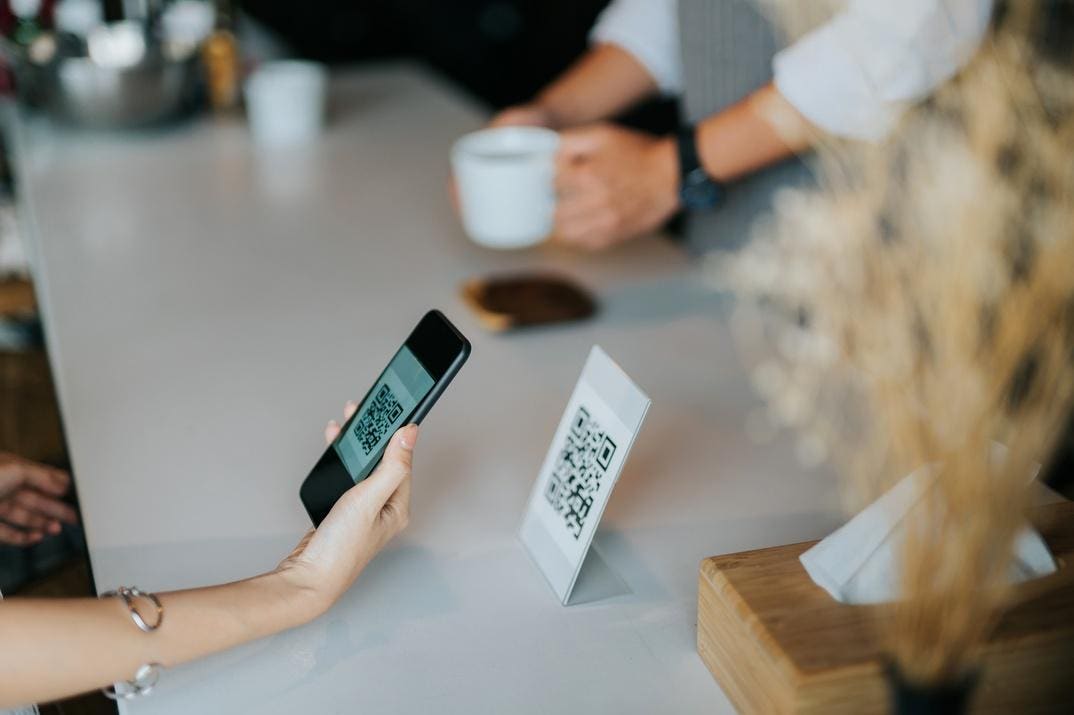Sharat Potharaju is the cofounder and CEO of Beaconstac, whose vision is to enable digital connection with every physical object and place.
From the upcoming generation of “iPad kids” glued to their screens to the ubiquitous but unpopular QR code menu (paywall), critics claim that a proliferation of technology is depriving people of human connection. However, contrary to popular belief, technology isn’t disconnecting us from the real world but fostering connections among our surroundings and others.
Technology, including the oft-maligned QR code, gives us more information about our world, allowing us to seamlessly share information across language barriers and connecting us with other tech-savvy individuals. I’ve outlined five ways to use QR codes to promote and nurture connections as well as some tips on how to do so.
Making New Contacts
Have you ever had a great networking conversation with someone only to realize you don’t have a business card on you, so you have no way to connect later? One way to prevent this common oversight is to take advantage of a digital business card (DBC) accessed via a QR code. This immediate link to your pertinent personal information can especially come in handy at business or networking events where you may only have a minute to talk to someone.
Connecting With The Community
QR codes bridge the gap between the digital and physical worlds. Within this phygital space, you can access information about your community and the world around you. Scanning a QR code next to a sculpture in the park can link you directly to the artist’s web page or background on the art’s significance. QR codes help disseminate information about local businesses and events so people can engage with their community and learn about the happenings in the area.
Improving Accessibility
The best technological innovation reimagines a world inclusive and accessible for all, including individuals with disabilities. Though many types of disabilities exist and there is no one-size-fits-all solution for accessibility, QR codes can help empower some disabled people, such as those with vision or cognitive conditions, to better navigate their environment.
Transforming Tourism
Smart cities harness the power of technology to optimize experiences and improve community operations, and QR codes have been a groundbreaking asset for city planners hoping to up their city’s “intelligence” and attract tourists. Dynamic QR codes added to street signs can immediately provide residents and visitors walking by with information about the community, like current traffic conditions, local restaurant recommendations, up-to-date public transportation schedules and maps of the area.
Facilitating Communication
Business leaders looking to extend their reach can do so easily with a multilingual QR code. This dynamic technology redirects the user to a personalized website based on their device’s language setting, enabling communication in their preferred language, access to localized content and improved customer experiences. Even if a product is shipped worldwide, the QR code on the package is the same, and the messaging remains consistent—but translated into the user’s preferred language.
QR Code Best Practices
Since QR codes have so much to offer, follow these tips on how to maximize their benefits.
• Create eye-catching QR codes with high-contrast colors that attract attention and make your code easier to scan. Leave some white space around the code so it really pops from its surroundings. Avoid using dark-colored backgrounds that hinder readability.
• Compel customers and make them want to scan your code. A QR code’s success hinges on its personalization—to make it the most enticing, add a relevant call to action that creates a sense of urgency. For example, if your QR code leads back to your DBC, add a banner saying something like “Scan here to learn more about me!” Actionable copy invites customers to interact with your code.
• Strategically position your QR code somewhere prominent. Think of it like a CTA button on your website. Placing your QR code “above the fold” on your website or in collateral material ensures the featured spot will stand out and attract customers’ notice. Keep it conspicuous and avoid putting it on materials with busy designs or multiple calls to action.
• Resize your codes carefully to avoid warping the pattern. Distorted QR codes are difficult or even impossible to scan. If you’re putting it on a billboard or a poster, maintain consistent proportions to ensure your code’s efficacy.
• Keep it streamlined and only use one code at a time. Bombarding customers with multiple QR codes on one piece of material can be overwhelming and prevent them from scanning any code at all.
• Double-check your QR-coded materials before publishing or printing to avoid costly mistakes. Very small or blurry codes aren’t scannable. And wouldn’t you rather find that out before printing 2000 copies of a brochure?
• Monitor the success of your QR codes by tracking their performance. Collect and analyze data to determine how many times the code was scanned, which code is scanned the most, what time of day sees the most scans and much more. Armed with these insights, you can make data-backed decisions about how to adjust your QR code strategy.
Whether you’re adding a contact to your professional network or learning more about an art museum exhibit, QR codes offer a simple but effective way to promote interpersonal and environmental connections through information sharing. Embracing their benefits can enhance how we interact with information—and each other—in the digital age.
Forbes Business Council is the foremost growth and networking organization for business owners and leaders. Do I qualify?
Read the full article here





